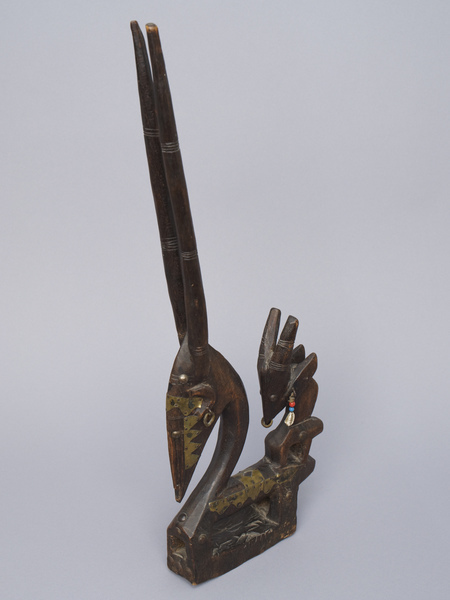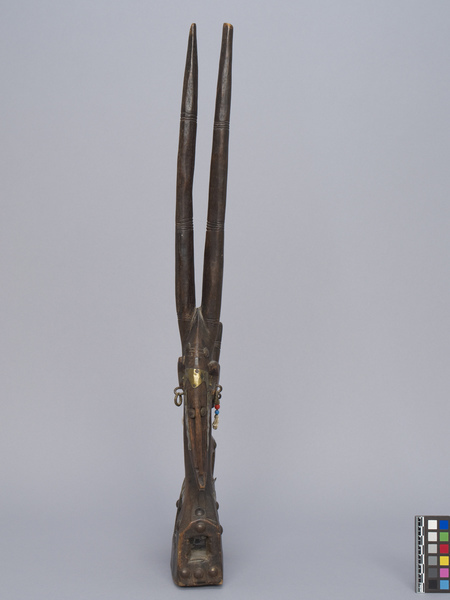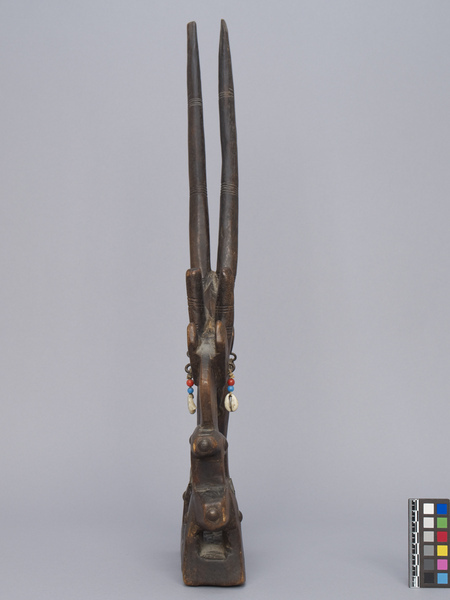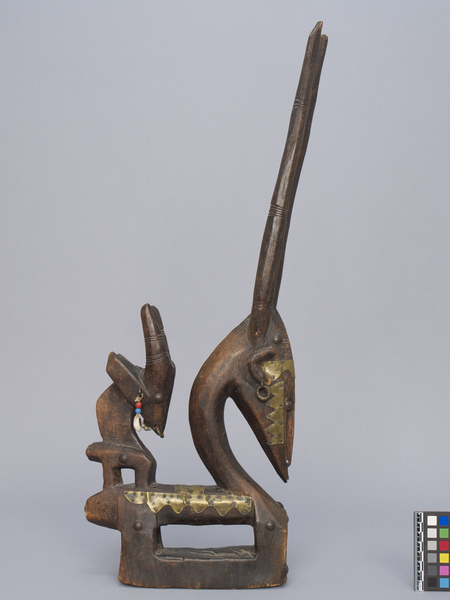Headdress Item Number: 2815/4 from the MOA: University of British Columbia




Description
A wooden headdress depicting a mythic antelope mother and child. The larger antelope has long horns, a narrow face, and a curved neck. Each horn has carved into it three sets of four rings. A pattern of carved lines runs vertically down each side and across the forehead. Attached to the face with small nails are metal decorations down both cheeks and across the forehead. A similar decoration is found on both sides of the torso and across the back. The eyes are made of metal nails with a large head. In the ears are round twisted metal rings. The small antelope is on her back. Its short horns are also carved with rings, two sets of four per horn. It has a round twisted metal nose ring, the same large-headed nails for eyes, and earrings of shell and red and blue plastic beads. The large-headed nails are used as decoration in various locations on the figure.
History Of Use
A female Chi Wara (Ci Wara, Tyi Wara) headdress that is made to be danced as a pair with a male mask at harvest festivals to honour Chi Wara, a half human and half antelope mythical being who taught agriculture to the ancestors of the Bamana people. When humans became wasteful, Chi Wara buried himself in the earth and the Bamana created headdresses to represent him. Together, the male and female headdresses embody the ingredients necessary for successful cultivation. The dancers would hold sticks in their hands, to represent the movements Chi Wara made when he taught men how to cultivate, and the women would sing songs of praise for Chi Wara and the farmers. The headdress is attached to a wicker cap, which is strapped around the chin of a dancer.
Specific Techniques
The wood is oiled and then charred in fire to deepen the colour.
Iconographic Meaning
The headdresses are inspired by antelopes, armoured pangolins, and aardvarks. The antelope head represents the strength and grace needed to farm. The armoured pangolin's body represents protection, and the aardvark's legs represent good digging needed for farming. The female Chi Wara headdress represents the earth, while the male one represents the sun. The long horns represent the tall growth of millet, and the baby on the back of the female represents all humankind. The fibre ties of the wicker cap, that the headdress would have been attached to, are associated with streams of water.
Item History
- Made in Mali
- Owned by David Torontow and Dorothy Torontow before September 14, 2010
- Received from David Torontow (Donor) and Dorothy Torontow (Donor) on September 14, 2010
What
Who
- Culture
- Bamana
- Previous Owner
- David Torontow and Dorothy Torontow
- Received from
- David Torontow (Donor) and Dorothy Torontow (Donor)
Where
- Holding Institution
- MOA: University of British Columbia
- Made in
- Mali
When
- Ownership Date
- before September 14, 2010
- Acquisition Date
- on September 14, 2010
Other
- Condition
- good
- Accession Number
- 2815/0004